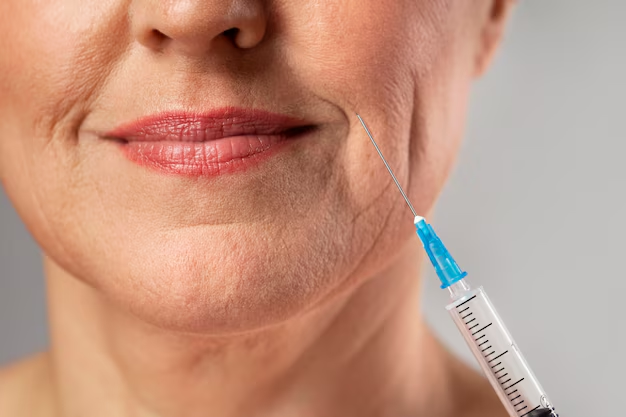As the aesthetic landscape evolves, so too do the techniques and products available for enhancing facial features. One of the latest innovations making waves in the field is RHA fillers, a groundbreaking range of resilient hyaluronic acid fillers. These fillers are designed to adapt to the dynamic movements of the face, providing a more natural and lasting result compared to traditional fillers. This article delves into what RHA fillers are, their benefits, the procedure, and post-treatment care.
What Are RHA Fillers?
RHA stands for Resilient Hyaluronic Acid, a type of filler developed specifically for dynamic facial areas. Unlike traditional fillers, which can sometimes lead to a stiff or artificial appearance, RHA fillers are engineered to withstand the repetitive motions of facial expressions. This unique formulation allows for a more natural integration with the skin, resulting in a soft, youthful appearance.
RHA fillers are typically categorized into different types, based on the area of the face they target, including:
- RHA 1: Ideal for fine lines and superficial wrinkles.
- RHA 2: Designed for moderate wrinkles and facial contours.
- RHA 3: Suitable for deeper wrinkles and volumization.
- RHA 4: Focused on areas requiring more substantial volume, such as the cheeks and jawline.
Benefits of RHA Fillers
RHA fillers offer numerous advantages over traditional hyaluronic acid fillers:
1. Enhanced Natural Appearance
The primary benefit of RHA fillers is their ability to mimic the natural movement of the skin. Because they are designed to adapt to facial dynamics, patients can enjoy a more natural look, avoiding the “frozen” effect that can occur with other fillers.
2. Long-Lasting Results
RHA fillers have been shown to provide longer-lasting results, typically lasting up to 15 months or more, depending on the type of filler used and the individual’s metabolism. This longevity makes them a cost-effective option for patients seeking sustained aesthetic enhancements.
3. Versatility
RHA fillers can be used in various areas of the face, from the delicate skin around the eyes to the more robust areas like the cheeks and jawline. Their adaptability makes them suitable for a wide range of patients and facial concerns.
4. Safety Profile
RHA fillers are made from a naturally occurring substance—hyaluronic acid—making them generally safe for most individuals. As with all aesthetic procedures, it’s crucial to consult with a qualified practitioner to assess any potential risks.
The RHA Filler Procedure
Consultation
The journey to RHA fillers begins with a consultation with a certified aesthetic practitioner. During this appointment, the practitioner will evaluate your facial structure, discuss your aesthetic goals, and determine the appropriate type of RHA filler for your needs.
The Treatment
The procedure typically lasts between 30 to 60 minutes, depending on the areas being treated. Here’s a step-by-step breakdown:
- Preparation: The treatment area is cleaned, and a topical anesthetic may be applied to minimize discomfort.
- Injection: Using a fine needle or cannula, the practitioner will inject the RHA filler into the targeted areas. The technique will vary based on the filler type and the specific facial features being enhanced.
- Molding: After the injections, the practitioner may gently massage the area to ensure even distribution of the filler and to sculpt the desired shape.
- Post-Treatment Care: Patients are usually given specific aftercare instructions to follow.
Recovery
There is minimal downtime associated with RHA fillers. Patients may experience slight swelling, redness, or bruising at the injection sites, but these effects typically resolve within a few days. Most individuals can return to their regular activities immediately following the procedure.
Post-Treatment Care
To ensure the best results from RHA fillers, patients should follow certain aftercare guidelines:
- Avoid Touching the Area: Refrain from pressing or massaging the treated areas for at least 24 hours to allow the filler to settle.
- Steer Clear of Strenuous Activities: For the first 24 to 48 hours, it’s advisable to avoid intense workouts or activities that may cause excessive sweating.
- Limit Sun Exposure: Protect your skin from direct sunlight and avoid tanning beds for several days post-treatment.
- Stay Hydrated: Drinking plenty of water can help maintain the longevity of the hyaluronic acid.
Potential Risks and Side Effects
While RHA fillers are generally safe, potential risks include:
- Allergic Reactions: Some individuals may experience allergic reactions to the components of the filler.
- Asymmetry: In rare cases, uneven results may occur, requiring follow-up adjustments.
- Infection: As with any injection procedure, there is a risk of infection, albeit minimal with proper technique and aftercare.
Conclusion
RHA fillers represent a significant advancement in the field of aesthetic medicine, offering a versatile and natural-looking solution for facial rejuvenation. With their ability to adapt to facial dynamics and provide long-lasting results, they are an excellent choice for those seeking to enhance their appearance while maintaining the natural movement of their facial expressions. As always, it is essential to consult with a qualified practitioner to determine the best approach for your unique needs and to ensure a safe and satisfying experience. Embrace the future of aesthetics with RHA fillers, and enjoy a refreshed, youthful look!
